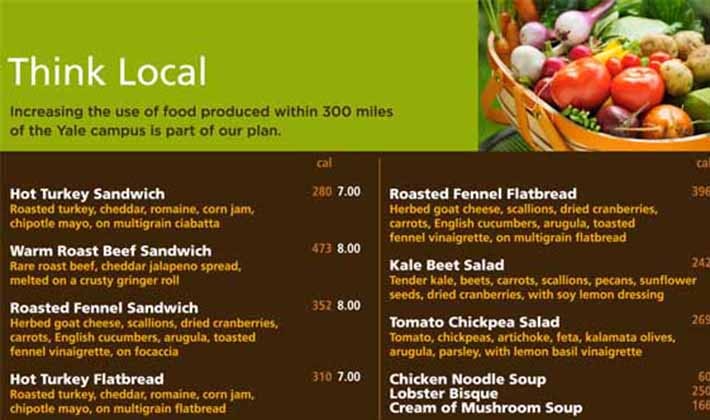
The U.S. Food and Drug Administration (FDA) in September issued a draft guidance document to help companies comply with mandated menu labeling, scheduled to take effect in late 2016 for restaurant chains with 20 or more units. The guidance can also be used by chains with less than 20 units but that will be voluntarily posting nutritional information for their menus.
The legislation – scheduled to take effect December 1, 2016 as part of the 2010 Patient Protection and Affordable Care Act – requires that calorie information be listed on menus and menu boards, and in addition to restaurants, also applies to movie theatres, bowling alleys, amusement parks and grocery stores. Currently, the FDA is soliciting comments to this recently released guidance as part of an ongoing process to make changes and updates in light of industry feedback and to help ease the transition for foodservice establishments.
In July, the FDA extended the compliance date an additional year, beyond the original December 2015 compliance date, it says, to help facilitate efficient compliance across all covered establishments.
“We appreciate the extensive input we have received from stakeholders throughout the process of establishing requirements for menu labeling in certain restaurants and other retail food establishments,” Dr. Susan Mayne, Director, Center for Food Safety and Applied Nutrition said in a statement on behalf of the FDA regarding the guidance document.
The guidance document starts off by pointing restaurants and businesses to the right sources to make nutritional calculations, including: The USDA National Nutrient Database for Standard Reference; cookbooks; laboratory analyses of menu items, and other “reasonable” means, such as Nutrition Facts labels of packaged foods that comply with the nutrition labeling requirements of section 403(q)(1) of the FD&C Act and 21 CFR 101.9, the FDA’s nutrient values for raw fruits and vegetables (Appendix C of 21 CFR part 101), or FDA’s nutrient values for cooked fish (Appendix D of 21 CFR part 101).
The document goes on to respond to many of the most frequently asked questions the agency has received to date. Download the document to read through these common questions and answers.
Q: How do I declare the calories in a combination meal listed on the menu or menu board if the meal comes in multiple sizes with multiple choices of sides?
A: When the menu or menu board includes an opportunity to increase or decrease the size of a combination meal, you must declare the calorie difference …using terms such as “adds” or “subtracts” and specify the number of calories added or subtracted based on the size .. for example, “adds 100/150 calories,” or “subtracts 100/150 calories.”
Q: How should I declare the calories on the menu or menu board for items in my “all- you-can-eat” buffet?
A: If such item appears on the menu or menu board, then the menu or menu board must include a statement next to the name or price of the item on the menu board that refers the customer to the self-service station for calorie information, such as “See the buffet for calorie information.”
Q: I have a children’s menu. Is there a different statement that I can use on this menu?
A: Yes. For menus and menu boards targeted to children, you may use the following statements as a substitute for or in addition to the succinct statement: “1,200 to 1,400 calories a day is used for general nutrition advice for children ages 4-8 years, but calorie needs vary” or “1,200 to 1,400 calories a day is used for general nutrition advice for children ages 4-8 years and 1,400 to 2,000 calories a day for children ages 9-13 years, but calorie needs vary.”
Q: Some establishments, such as movie theater concession stands, use digital menu boards with a rotating display that may have multiple panels, some of which list standard menu items and some of which do not. How should such digital menu boards incorporate the succinct statement and statement of availability of additional written nutrition information?
A: The succinct statement and the statement of availability need only appear on rotating displays of such digital menu boards that list standard menu items. In general, for the purposes of the final rule, we consider a multi-paneled menu board to be a single menu board if the entire multi-paneled board is visible to consumers when consumers are placing order selections for the standard menu items listed on such menu board. For menu boards, the succinct statement and the statement of availability must appear on the bottom of the menu board and state “Additional nutrition information available upon request.”
Amelia Levin
